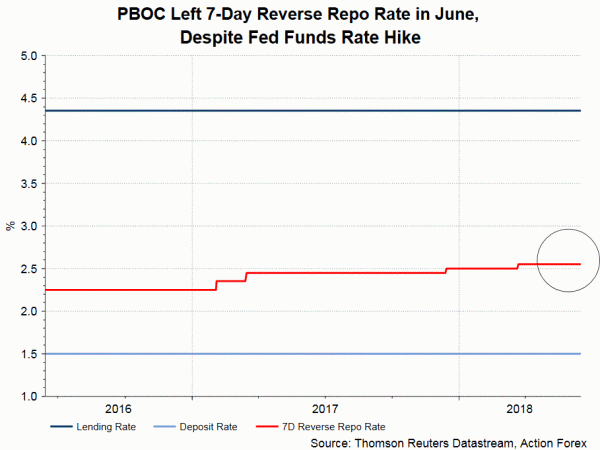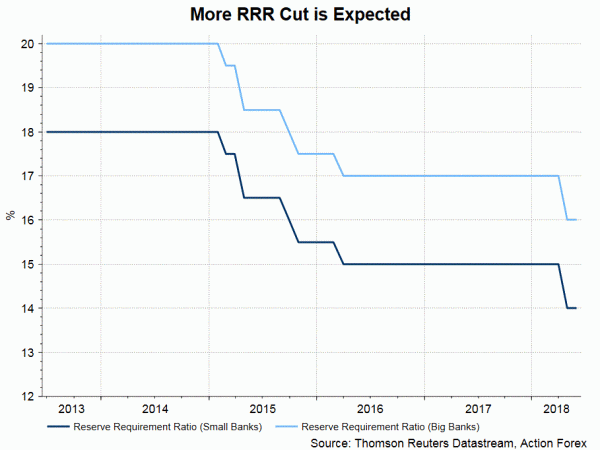We expect the slowdown in China’s economic growth would be increasingly evident in coming months, reflecting the rapid moderation in credit growth in the first half of the year. PBOC left its policy rate unchanged, although FOMC lifted the Fed funds rate by +25 bps, in June. This was in contrast with the actions in December 2017 and March 2018, when PBOC raised interest rates in sync with the Fed’s moves. Recent economic developments and PBOC’s actions have been consistent with our assessment that China’s growth is slowing down and the government has tilted its focus of monetary stance to growth stability from deleveraging. If the government fails to contain the current situation, risk is skewed to the downside for full-year GDP growth to reach the “about +6.5%” target.
Taking a look at May’s activity, growth in industrial production (IP) eased to +6.8% y/y, from 7% in April and consensus of +7%. Retail sales grew +8.5% y/y, easing from +9.4% in April. The market had anticipated growth to pick up to +9.6%. Urban fixed-asset investment (FAI) increased a mediocre +6.1% in the first five months of the year, compared with a +7% growth in the first four months. The market had anticipated a growth of +7%. The deceleration in infrastructure investment (+5% vs +7.6% in Jan-April and +8.3% in 1Q18) was significant, outweighing an improvement in manufacturing investment and stable real estate investment. This is a result of the crackdown of local-government financing channels (more below). Manufacturing investment growth gather momentum for two months in a row, expanding +5.2% y/y, vs +4.8% in Jan-April and +3.8% in 1Q18. Industrial profits and investment in high-tech sectors should continue to lend support to this front. Real estate investment steadied, growing +10.2% y/y, compared with +10.3% in Jan- April and +10.4% in 1Q18. The dataflow reinforces that China is undergoing cyclical economic slowdown, exacerbated by the government’s de-leveraging policies over the past few quarters.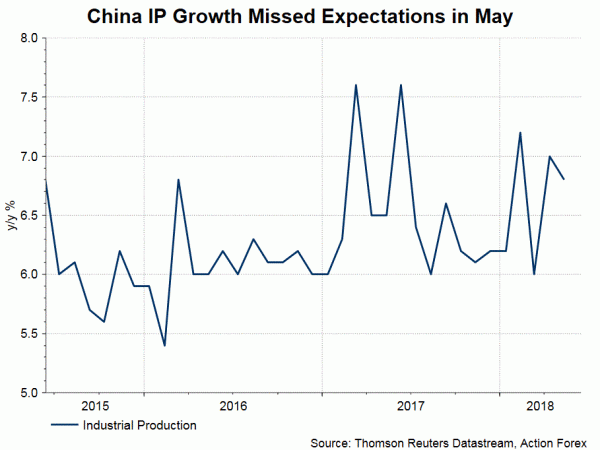
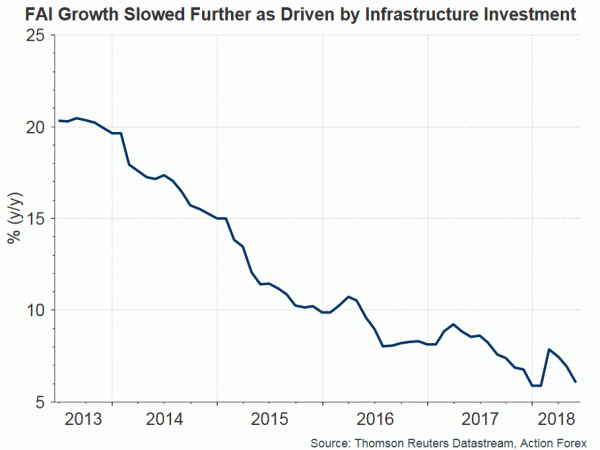
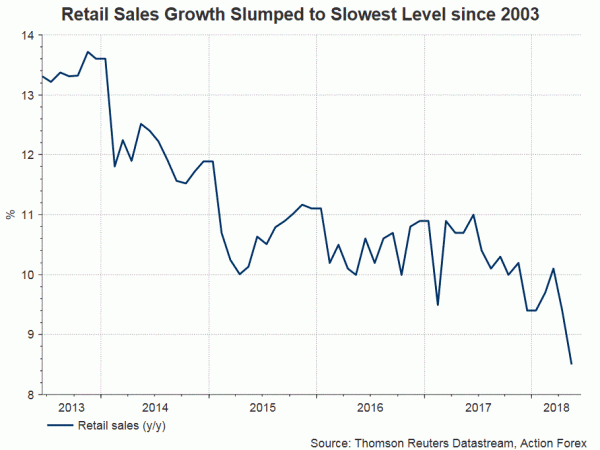
In a separate report, it is shown that China’s credit growth has reached the slowest growth on record in May. Total social financing (TSF), a broad measure of credit and liquidity in the economy, plunged to RMB 761B, much weaker than consensus of RMB 1300B and April’s RMB 1560B. The outstanding TSF was RMB 182.14 trillion at the end of last month, up 10.3% y/y, compared with +10.5% y/y growth in April. The decline in non-bank finance (-RMB 422B) contributed to most of the slowdown, as the government took action to crack down shadow banking and off-balance sheet lending. These are the major source of funding for local governments to finance their projects. The slump in this source of financing has then led to the significant slowdown in infrastructure investment growth (as shown in FAI in May).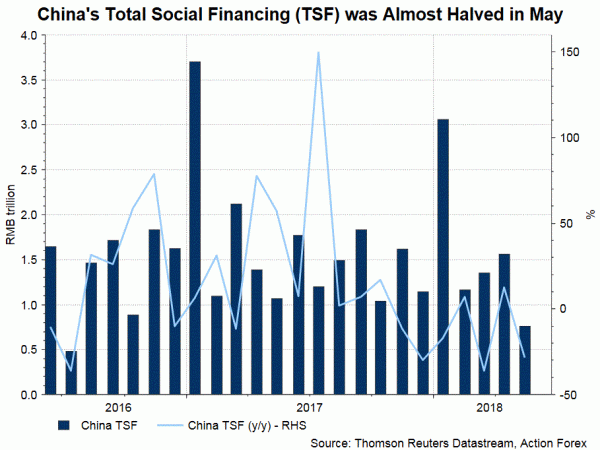
On the monetary policy, PBOC last week left its open market operation (OMO) rates unchanged, despite Fed’s widely- anticipated rate hike and consensus of a +5 bps increase. This has further confirmed our assessment that the Chinese central bank has shifted its focus to a monetary policy stance with slight easing bias. We caution that the easing bias might intensify as driven by trade war. Besides leaving interest rates unchanged in May, PBOC had introduced targeted RRR in January and reduced RRR by 100 bps in April. We expect further reduction in RRR in coming months.




